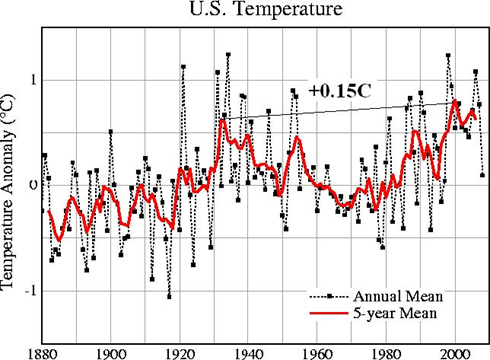2007 Fire Season Climate and Weather Restoring cultural landscapes The 2008 Fire Season The 2009 Fire Season The 2010 Fire Season
by admin
The True Crisis
The LA Times spit out an editorial today that missed the mark by a mile.
Climate change is the true crisis
LA Times Editorial, May 10, 2010 [here]
West Virginia’s mining disaster and the Gulf of Mexico oil spill were disastrous and investigations are justified, but the real threat is much worse. …
Blah, blah, blah…
… beaches are going to vanish within half a century (along with much of Miami) under the worst-case scenarios presented by climate modelers.
Blah, blah, blah…
Lawmakers today aren’t seeing the forest for the trees; that will change when the forest has burned or been destroyed by bark beetles, but by then it will be too late.
It may be too late for the LA Times, and for “climate modelers”, but you can be assured the beaches of Florida are not disappearing. Global sea level rise since 2005 is a whopping 1 millimeter per year, down from 2 millimeters per year over the last century or so. And now that global ice caps are growing again, it is likely that sea levels will fall; over the next 30 years at least. In fact, sea levels may have peaked in this interglacial (the Holocene) and could fall for the next 100,000 years or thereabouts.
More important to the principal theme of SOS Forests, we must point out (yet again) that even the most generous estimates of US temperature change indicate that over the last 130 years temperatures have risen no more than 1 deg C.

That’s 2 deg F. On a day when it might have been 90 deg F 130 years ago, today it might be 92 deg F. That change is so small as to be largely undetectable, unnoticeable, and of no significant consequence to forests.
We have been experiencing a forest fire crisis, however, and bark beetle infestations, but they are not due to temperature change.
Recent historical stand reconstructions in the Oregon Cascades reveal that those forests contained less than 20 trees per acre in 1825 but today have more than 100 trees per acre (larger than 8″ dbh). The 1825 basal areas were 25 to 50 sqft/ac; today’s basal areas are 150 to 250 sqft/ac.
What that means is today’s forests contain 8 to 10 times more biomass than was present during the frequent fire era. That’s why forests burn more intensely and severely today — the fuel loadings are astronomical. That’s why there are beetle epidemics today — individual trees are stressed due to tree-to-tree competition.
It has nothing to do with climate change. It has everything to do with the elimination of historical anthropogenic fire around 150 years ago. It was frequent, seasonal Indian burning that gave rise to open, park-like forests. Removal of the traditional land stewards and their traditional land management practices has led to over-stocked, fuel-laden, stressed forests.
This point is important: it was deliberate, traditionally-informed, human-set fires, not lightning fires that created the open, park-like forests of yesteryear.
Aboriginal burning occurred in spring and fall months, seasons when lightning is rare. The residents set a high frequency of fires that were of low intensity. That created an anthropogenic mosaic and reduced the number of infrequent, high intensity lightning fires because the latter burned in vegetation that had been pre-burned repeatedly by humans. Lightning fires followed the patterns and intensities established on the landscape by anthropogenic fires.
When the Native Americans were expelled from the landscape, their traditional burning practices left with them. Biomass started to build up. Today the biomass loadings are a-historical — far greater than what has been typical in U.S. forests for the last 10,000 years or more.
No wonder fires are more intense and destructive.
Temperature change has been so small as to be hidden in the noise of daily temperature variation. But the biomass change is huge, obvious, measurable, and beyond any debate.
Urban editors in LA don’t get that, though. In their own hills surrounding the LA Basin the chaparral fuel loads are enormous and constitute a huge hazard to the homes, businesses, and lives of those self-same editors (and their neighbors). Every year in SoCal catastrophic fires erupt and do $billions in damages. It is not the air that burns — it is the fuels. More fuels equal bigger, more intense fires. The fire algebra is plain as day and in their face. Yet they are more concerned about an ephemeral (and highly debatable) temperature anomaly than with the chaparral piled up around their communities in a-historical quantities.
As long as people think the editors at the LA Times are more intelligent than dog food and pay no attention to the fuels, fire disasters will continue to plague the region.
The government can tax the economy to bare bones and shut down every power plant and internal combustion engine in the nation, but biomass will continue to grow, fuels will continue to accumulate, and our fire crisis will roar on unabated.
At some point people must become aware of history and biology and take positive actions to manage biomass build up, if we are to develop solutions to the true modern crisis in our forests and landscapes.
